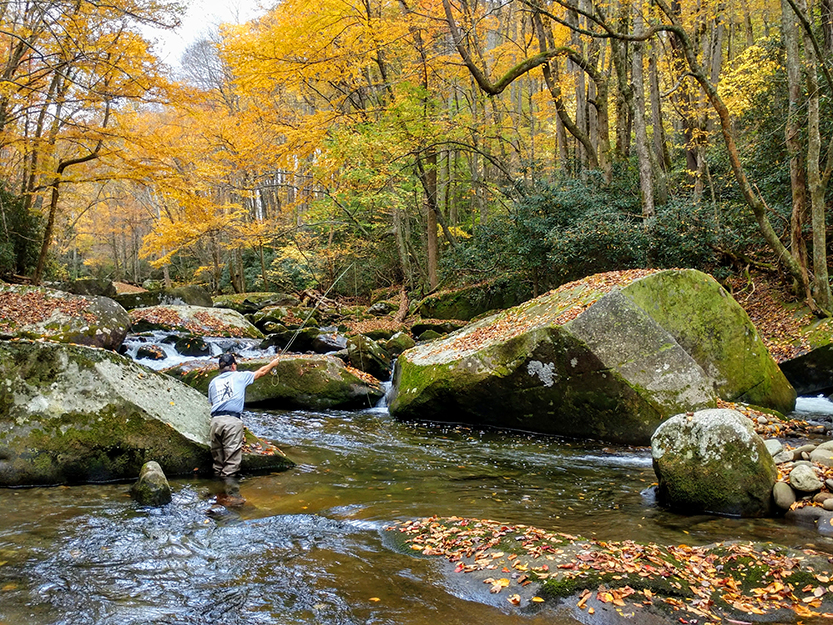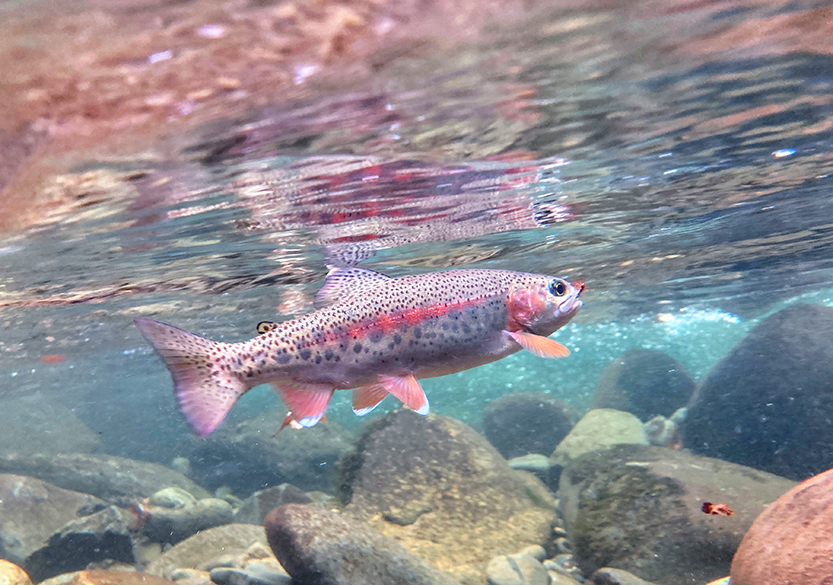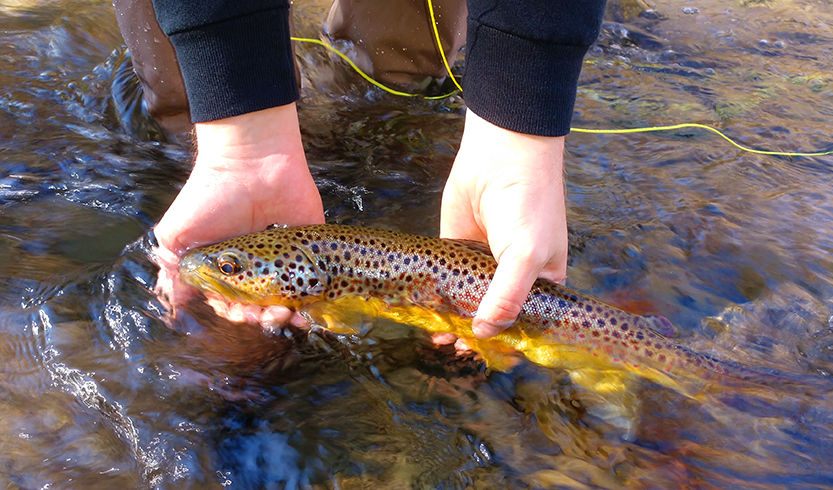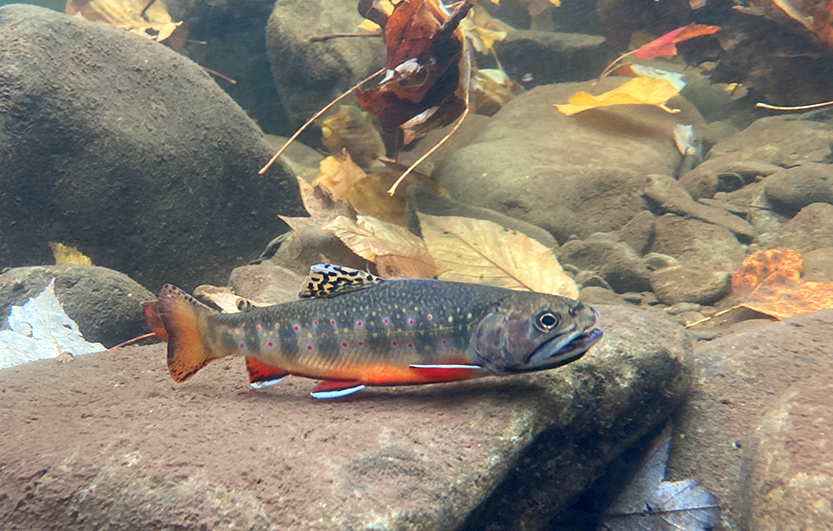2020 has been a long year for all of us, but we have to say it was pretty good as far as fly fishing in the Smoky Mountains was concerned. Water levels never got low. In fact, our flow issues were related to high water, but fortunately they usually correct within a few days.

A spectacular October day on the water in Great Smoky Mountains National Park during the peak of fall color
Autumn is typically a time of low water in the Southern Appalachians, but we’ve had several high water events from the remnants of tropical storms. We lost a few days of guiding, but fishing has generally been quite good.
Dry fly fishing has been the primary way we’ve hooked trout. Fish seemed to prefer a dry fly by a wide margin even on cool mornings when we’d run a dropper rig with a smallish beadhead nymph. This has slowly shifted as the weather has cooled to favor the nymph in the morning, but we’re still seeing plenty of rises in the afternoon.
The key for us has been to find the size fly the fish are taking. The exact pattern nor color seems to be as important as the size. In a typical fall season we’ll use a #16-18 dry fly as the fish are feeding on small Blue Wing Olives, caddis, and midges. This year the extra water has made it such that the fish don’t seem to notice the #18 very much, but are certainly rising to #14-16 flies quite well. We’re using Parachute patterns in #14 and Stimulators or Elk Caddis in #16. These have provided the bulk of our strikes. We’ve also noticed the fish are on smaller nymphs better than large ones. Focus on #16-18, plus these sizes pair well for dropper rigs if you want to try that.
This time of year is when conditions change somewhat quickly. We’re still getting some good dry fly fishing. That will certainly shift to mostly nymphing as we move into December. There are good numbers of Little Black Caddis starting to move so the dry fly fishing could continue if the weather remains moderate. Just remember though, temperatures in the mountains are always cooler than the surrounding areas. Dress in layers for comfort; warm for the morning and shed a layer in the afternoon.


